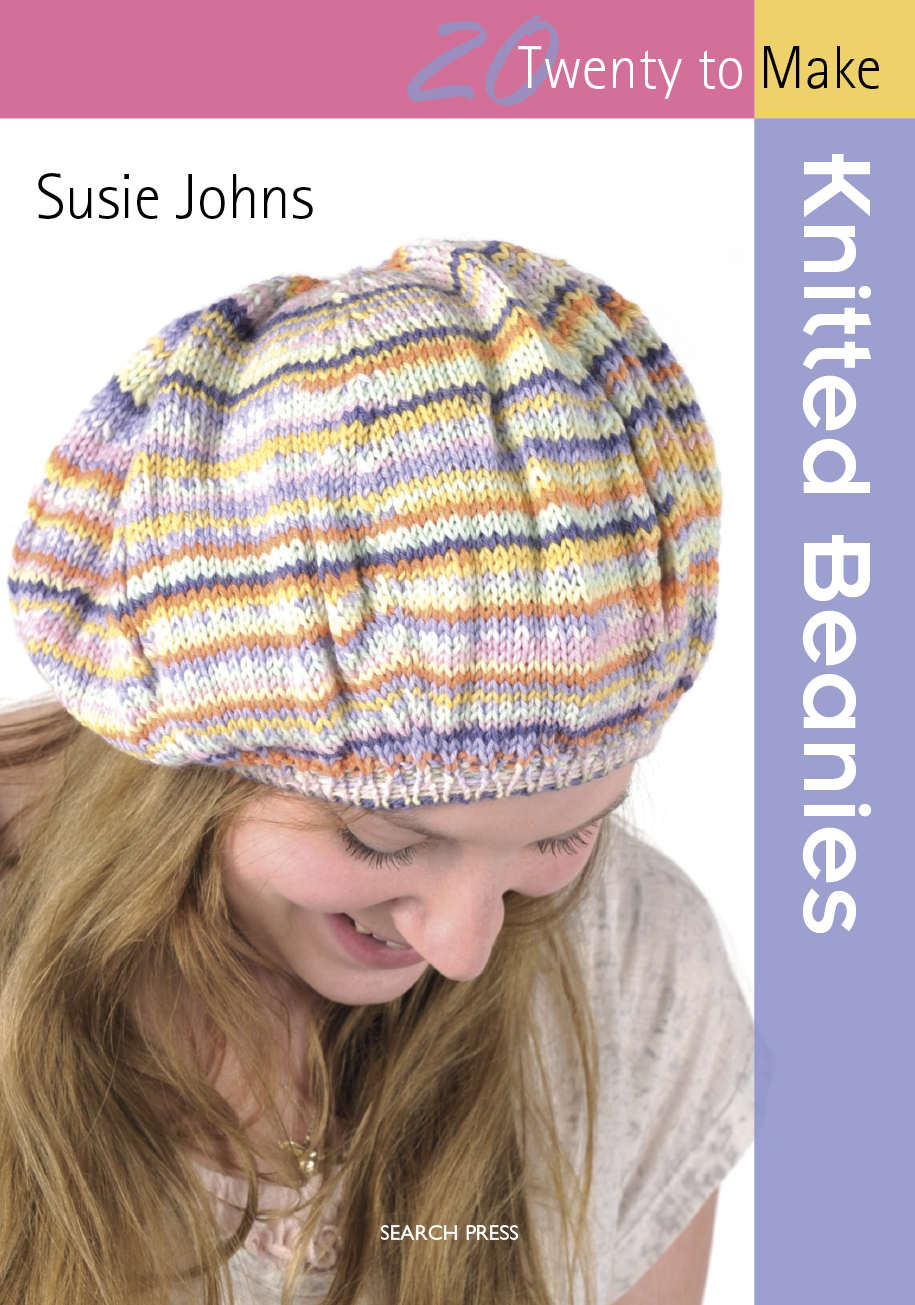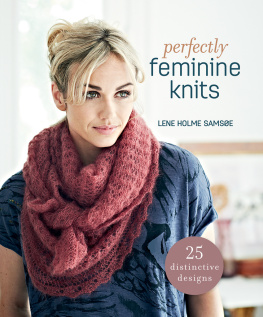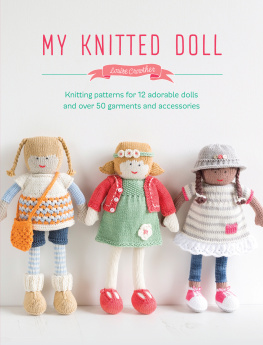

Susie Johns is an experienced crafter, specialising in papercrafts and embroidery. She contributes regularly to a number of craft magazines and is the author of a range of books on practical subjects, such as collage, painting, drawing, papier-mch, crochet and embroidery. She also teaches craft workshops.


First published in Great Britain 2012 Search Press Limited
Wellwood, North Farm Road,
Tunbridge Wells, Kent TN2 3DR Text copyright Susie Johns 2012 Photographs by Debbie Patterson at Search Press Studios Photograph Baby Beanie by Rebecca Warwick www.rebeccamayphotography.co.uk Photographs and design copyright Search Press Ltd 2012 All rights reserved. No part of this book, text, photographs or illustrations may be reproduced or transmitted in any form or by any means by print, photoprint, microfilm, microfiche, photocopier, internet or in any way known or as yet unknown, or stored in a retrieval system, without written permission obtained beforehand from Search Press. Print ISBN: 978-1-84448-707-3
EPUB ISBN: 978-1-78126-041-8
Kindle ISBN: 978-1-78126-096-8
PDF ISBN: 978-1-78126-150-7 The Publishers and author can accept no responsibility for any consequences arising from the information, advice or instructions given in this publication.
Readers are permitted to reproduce any of the items in this book for their personal use, or for the purposes of selling for charity, free of charge and without the prior permission of the Publishers. Any use of the items for commercial purposes is not permitted without the prior permission of the Publishers. Suppliers If you have difficulty in obtaining any of the materials and equipment mentioned in this book, then please visit the Search Press website for details of suppliers: www.searchpress.com
| Dedication For my lovely children Josh, Lillie and Edith, who all look great in hats. |
We would like to thank Lizzie Rampe, Shaiann and JJ Hazon,Freyja and Poppy Arthur, Ben and Sam Kersey, Polly Tracey, Dot Winter and Jett Phoenix Lucas-Winter and Florence May Warwick for featuring in this book.
| Abbreviations : |
| alt | alternate |
| beg | beginning |
| dec | decrease |
| inc | increase |
| inc1 | increase one stitch |
| inc2 | increase two stitches |
| k | knit |
| m | make |
| m1 | make one stitch |
| p | purl |
| psso | pass slipped stitch over |
| rem | remaining |
| rep | repeat |
| RS | right side |
| sl | slip stitch |
| st(s) | stitch(es) |
| tbl | through the back loop(s) |
| tog | together |
| WS | wrong side |
| yfwd | yarn forward |
| UK and US terminology: |
| UK | US |
| cast off | bind off |
| stocking stitch | stockinette stitch |
| yarn forward | yarn over |

Contents
Introduction

When it comes to keeping warm, a beanie hat is hard to beat: soft and snug, it is a great insulator that is compact enough to stuff into a pocket, ready to whip out at the slightest hint of a chill wind. Beanies are also fun to make and an easy yet satisfying project for a beginner to tackle.
A beanie hat needs only a small amount of materials, typically one or two balls of yarn, and is quick to knit, so you can create one on impulse, for yourself, or for your friends and family. The woolly hat is currently enjoying something of a revival. Of course, the beanie means different things to different people: usually knitted, it can be snug, clinging tight to the head; it can be loose-fitting, or even slouchy; some have a brim or a ribbed band that can be rolled back; some have decorations such as a bobble, bow or buttons. When it comes to making a fashion statement, you can really let your heart rule your head by creating a beanie to match your favourite outfit. You can try bold stripes in two or more colours or even a whole rainbow. You can choose to knit a beanie with a fine yarn, resulting in a thin fabric, or you can use a standard double-knitting yarn, or something more chunky: a range of yarns has been used throughout the book, to offer this choice.
A natural yarn such as merino wool, perhaps mixed with some cashmere, angora or alpaca will provide the most warmth. Some of the patterns in this book are designed to be knitted in rows, using a pair of knitting needles, so you will need to stitch a seam or two to create your hat shape, while some are knitted in the round on a set of four double-pointed needles, giving a seamless finish. It is important that you knit to the stated tension for each pattern because otherwise your knitting may be looser or tighter than the tension in the pattern and your hat will turn out bigger or smaller than desired, and may not fit. Most of the hats, however, are quite stretchy and versatile, and will fit a range of head sizes. 
Techniques Mattress stitch seam This method creates an invisible seam. Working on the right side of the work, place the two edges together then, starting at the bottom edge of the work, insert a tapestry needle threaded with matching yarn under the bar between the first and second stitches on the right-hand side.
Then insert the needle in the same way on the opposite edge. Repeat, working across from left to right and back again, moving up the seam like the rungs of a ladder. Do not pull the stitches tight until you reach the top of the seam, then pull the yarn ends until the two sides meet and fasten off the yarn ends securely.  Backstitch Place the two pieces to be joined on top of one another, right sides together, then, working from right to left, one stitch in from the selvedge, bring the needle up through both layers then back down through both layers one row to the left. Bring the needle back up through both layers one row to the left, then back down one row to the right, in the same place as before. Repeat, taking the needle two rows to the left each time, and one row back.
Backstitch Place the two pieces to be joined on top of one another, right sides together, then, working from right to left, one stitch in from the selvedge, bring the needle up through both layers then back down through both layers one row to the left. Bring the needle back up through both layers one row to the left, then back down one row to the right, in the same place as before. Repeat, taking the needle two rows to the left each time, and one row back.
Gathering stitch Most of the beanie hats are worked from the bottom upwards, finishing on the top of the crown, where the last few stitches, when they are not cast off, are instead threaded on to a length of yarn and gathered together. Where the pattern requires you to do this, simply cut the working yarn, leaving a tail at least 30cm (11in) long, then thread this tail through the remaining stitches and pull up to gather the stitches together and close up the hole. Fasten off the yarn end securely. Sometimes a piece of knitting is gathered to create an interesting shape for example, . In this case, thread a tapestry needle with matching yarn, fasten the end of the yarn to the fabric and sew a running stitch through the fabric, then pull up the yarn so that the fabric is gathered into pleats. 









 Susie Johns is an experienced crafter, specialising in papercrafts and embroidery. She contributes regularly to a number of craft magazines and is the author of a range of books on practical subjects, such as collage, painting, drawing, papier-mch, crochet and embroidery. She also teaches craft workshops.
Susie Johns is an experienced crafter, specialising in papercrafts and embroidery. She contributes regularly to a number of craft magazines and is the author of a range of books on practical subjects, such as collage, painting, drawing, papier-mch, crochet and embroidery. She also teaches craft workshops. 
 First published in Great Britain 2012 Search Press Limited
First published in Great Britain 2012 Search Press Limited Contents
Contents When it comes to keeping warm, a beanie hat is hard to beat: soft and snug, it is a great insulator that is compact enough to stuff into a pocket, ready to whip out at the slightest hint of a chill wind. Beanies are also fun to make and an easy yet satisfying project for a beginner to tackle.
When it comes to keeping warm, a beanie hat is hard to beat: soft and snug, it is a great insulator that is compact enough to stuff into a pocket, ready to whip out at the slightest hint of a chill wind. Beanies are also fun to make and an easy yet satisfying project for a beginner to tackle. 
 Backstitch Place the two pieces to be joined on top of one another, right sides together, then, working from right to left, one stitch in from the selvedge, bring the needle up through both layers then back down through both layers one row to the left. Bring the needle back up through both layers one row to the left, then back down one row to the right, in the same place as before. Repeat, taking the needle two rows to the left each time, and one row back.
Backstitch Place the two pieces to be joined on top of one another, right sides together, then, working from right to left, one stitch in from the selvedge, bring the needle up through both layers then back down through both layers one row to the left. Bring the needle back up through both layers one row to the left, then back down one row to the right, in the same place as before. Repeat, taking the needle two rows to the left each time, and one row back.